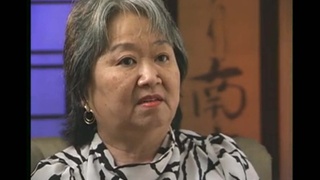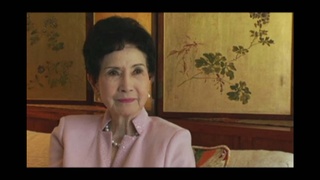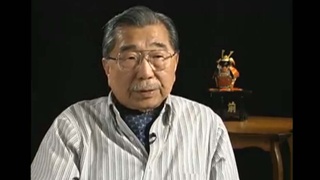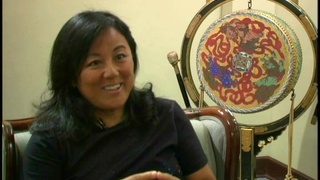Interviews
Okinawan discrimination
Like Okinawan people, those days they were sadly discriminated. I remember that they lived in special area. And they were such nice people. And my mother told me I shouldn’t discriminate them. And so I became good friends with couple of Okinawa-ken girls. And at school, the other students, the Naichi girls—you know what the Naichi is, the Naichi people who came from mainland Japan. You know the Hiroshima, Yamaguchi or the non-Okinawans whose parents came from the main island of Japan—they were called Naichi. And so, because I played with the Okinawan people—they pulled their hair and they wouldn’t play together—every recess, the Okinawan girls were all alone. But, because my mother had taught me—and I like those girls, they were so nice—I really got along well with them. So, I used to play together with them. So they would pull my hair to punish me.
But, discrimination was terrible in those days. And when I interviewed the Okinawan picture brides, they told me how much they had suffered because some people were so cruel to them.
Date: February 19, 2004
Location: Hawai'i, US
Interviewer: Lisa Itagaki, Krissy Kim
Contributed by: Watase Media Arts Center, Japanese American National Museum.
Explore More Videos


Thoughts on relationship between Japanese Peruvians and Japanese Americans at Crystal City, Texas
(1937 - 2021) Teacher

Father interrogated by FBI, but not taken away
(1925 - 2018) Nisei educator from Hawai‘i

The political effects on Nikkei during the war (Spanish)
(b. 1950) Nisei Chilean, Businessman

Government sold Japanese Canadian properties for little money
(b. 1928) Doctor. Former Chair of the Japanese Canadian Redress Foundation.

Questioning Curfew
(1918-2012) Fought the constitutionality of Executive Order 9066.

Challenges of finding a summer job
Judge, only Japanese American to serve on CWRIC.



Traumatic experiences before camp
(1913-2013) Doctor specializing in obstetrics in Southern California

“Everybody went in like sheep”
(1913-2013) Doctor specializing in obstetrics in Southern California

Ambassador of Good Will (Spanish)
(b. 1962) Peruvian Poet, Okinawan descendant

Discrimination for Nisei doctors
(1928–2016) Daughter of an Issei doctor


Being Denied as a Japanese American Lawyer
(b. 1934) The First Japanese American Appointed to the U.S. Court of Appeals.
